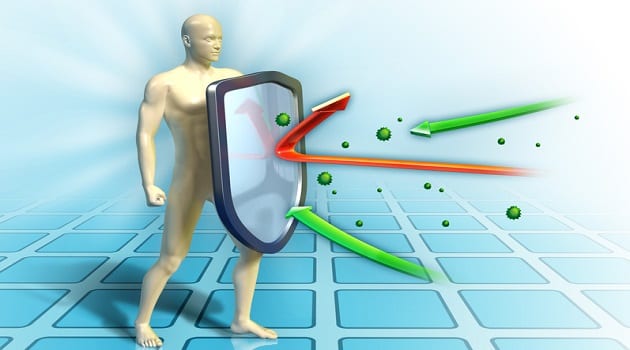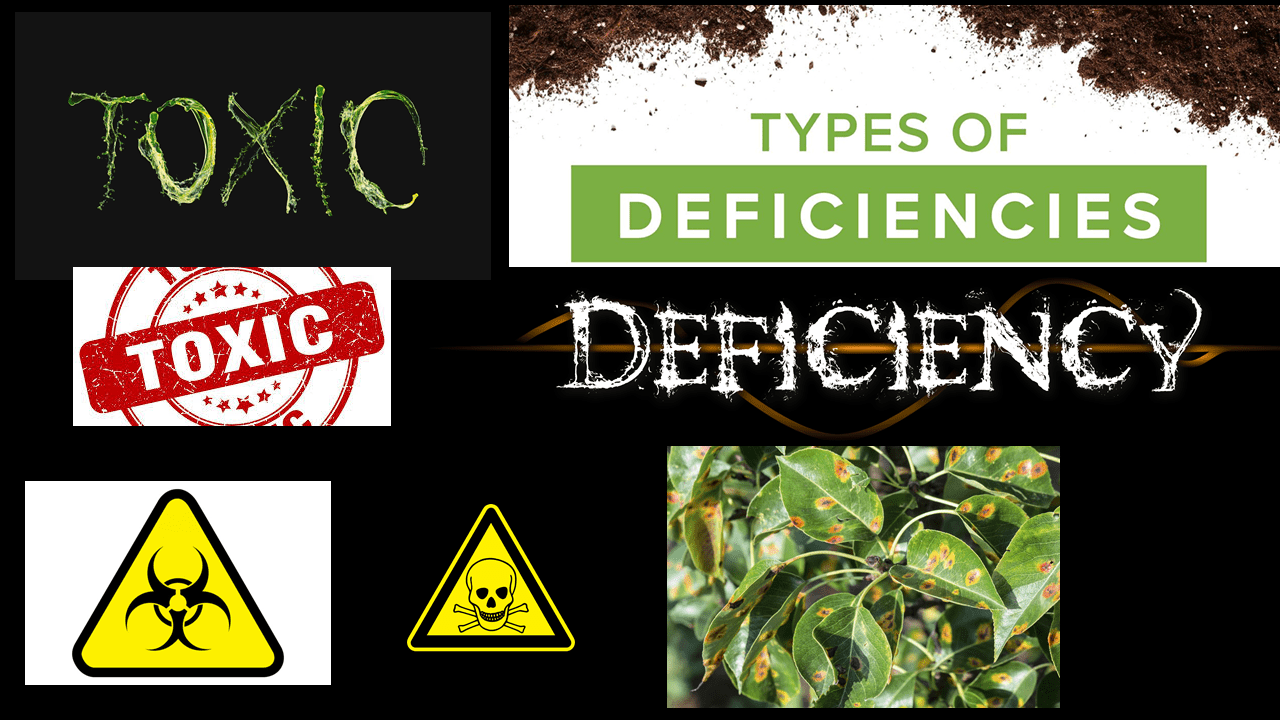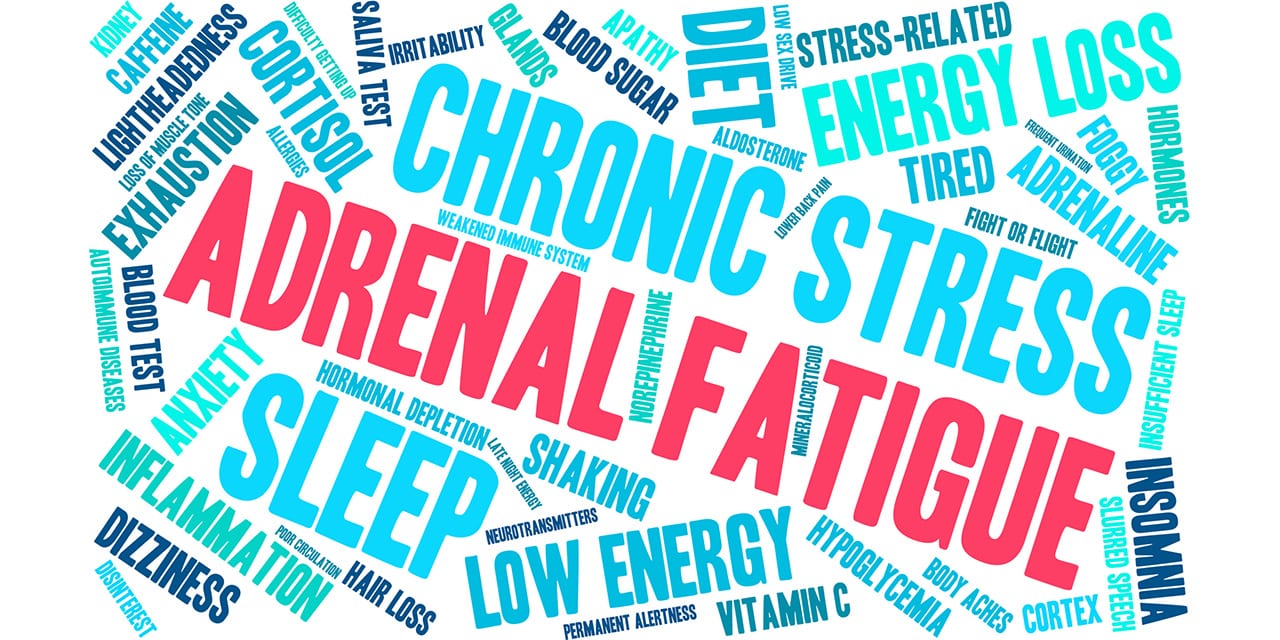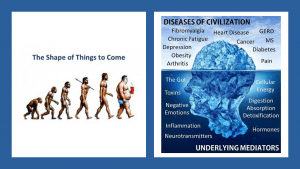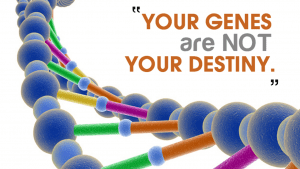Learning about Stress Physiology can help you
Live a more Vibrant Life!
Stress is a ubiquitous contributor to dysfunction - and knowing more about it can drive different behaviours and choices!
Let's face it - we all have some idea in our minds of what 'stress' or 'being stressed' means to us. These ideas though are often far from complete.
This article is broken down into a sequence of TOPICS - together, they are a "deep-dive" into different aspects of stress physiology.
Stress, and how your body copes, reacts or adapts to it, is a key focus of Health and Wellness Coaching. As you will see, this topic also links directly to the benefit of Chiropractic care in your body's expression of health and wellness. Let's begin...
Stress Physiology is a critical topic that underpins the value of our model of healthcare – the combination of Chiropractic Care with Health & Wellness Coaching.
Here, we explain the potential impact of ongoing physical, biochemical and mental-emotional stress-load on the human body.
In conjunction with the ‘rationale’ for regular chiropractic care, here we describe the value to the human ‘ecosystem’ you call your body…
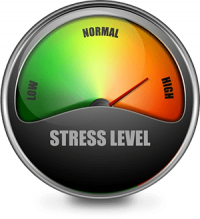
…the value for you of progressively identifying, understanding and then working toward reducing stress-load from various causes – for the improvement of health and wellbeing.
Topic 1: Let's begin by defining a general framework or context...
What do you think of, when you think of being ‘stressed’ or ‘stressed out’??
How would YOU define STRESS if you were asked to??
But stress is so much more!
First – let’s outline that stress in and of itself is neither good, nor bad – in fact the father of stress research – Canadian physiologist Hans Selye outlined 2 general categories of stress which he labelled EU-STRESS (a ‘good’ stress) and DIS-STRESS (stress that can cause harm or interfere with ideal function).
Under these definitions, you can actually label as stress – ANYTHING – any event, stimulus, thought or experience which CHANGES your internal physiology (function).
Stress can be used as a ‘fuel’ to help you move to the next level of capacity, but equally it can harm or hinder – the determining factor about whether a given stressor, or combination of stressors is GOOD or BAD, is the state of your body and nervous system – how well can it ‘read’ the stress, how well can it adapt, what resources are at its disposal?
If your body is overwhelmed, or otherwise at some type of limit, additional stress load will ALWAYS have harmful effects.
Using this broad definiton – going for a run is a stress! Your physiology must change in response to an event – your heart and breathing rate and blood pressure must change in response (and of course, so much more).
It may be a GOOD stress for someone who is fit – it will help them maintain or extend their level of fitness, feel good, clear their mind etc. But for someone who is more unfit, a run may well be a cause of DIS-STRESS – it may cause imflammation, pain, self-judgement, fear and in the worst possible situation it could lead to a heart attack or death.
Factors that can be potentially stressful vary from individual to individual – because this underlying state of coping will vary from person to person – but here is a key idea – stresses are NOT ONLY mental or emotional – they can equally have a physical cause or a biochemical cause too!
We limit the further conversation below to the processes caused by DIS-STRESS – the negative or harmful effects that detract from your most VIBRANT life.
Dr Ben’s Definition of Stress
At Dr Ben Phillips.com I focus on the impact of stress as a profound and inescapable factor in determining health and wellbeing. I have a …
ACKNOWLEDGEMENT: These topics have been written primarily from resources produced by Dr James L. Chestnut B.Ed., M.Sc., D.C., C.C.W.P. – Many thanks for these works!
Topic 2: The FEAR & PROTECTION reaction - the Beginning of Stress Physiology
Step 1: The first step in any reaction to stress is that FIRST, your body has to DETECT it...
This happens through the sensory components of your nervous system – signals that indicate actual or possible threat or stress in the environment (including the environment inside your body!) are sent to your spinal cord and then on to your brain.
A negative stressor is any stimulus (be it physical, chemical or mental-emotional) that signals to the body some form of toxicity (some experience of condition our body doesn’t like) or deficiency (any requirement the body needs, but isn’t getting in appropriate quantities).
Step 2: The ALARM reaction - "to urgently change the environmental stress load, NOW"
The ALARM reaction is a reflex. It is pretty much automatic – you have no immediate control.
The ‘stress’ signals ‘land’ in an area of the (sympathetic) nervous system (cell bodies of intermediolateral tract (IML)) and cause them to ‘fire’
The ALARM reaction is the typical “fear and protection” reaction – what was commonly called ‘fight or flight or freeze’ reaction in the past.
What are the physiological changes occurring in your body and brain when under the effects of the “fear and protection” reaction
(historically called “fight or flight or freeze”)
The Primary Effects include:
This list is not exhaustive, but describes some examples:
- DECREASES anabolism (growth and repair) – sex glands, sex drive, digestion, growth (growth hormone production), cellular immunity – it’s a waste of energy and resources
- INCREASES catabolism (body breakdown) to provide resources for emergency response
- INCREASES Heart Rate, Stroke Volume (and therefore Blood Pressure)
- INCREASES Blood Sugar
- PRIORITISATION of blood flow to areas of the body needed for fight/flight (fear and protection) responses, and
- DECREASED blood flow to areas for healing, growth, repair (relaxation and exploration)
- DECREASES cellular immunity – uses too much energy = waste!
Activated later for healing, growth, repair
This is an incredibly fast outcome, because unlike MOST nerve pathways, there is no relay-chain of two linked nerve cells to get the message through.
The adrenal glands are the source of the two primary ‘stress’ hormones – cortisol and adrenaline.
This is the slower and more sustained pathway that continues the release of stress hormones.
It occurs through releasing hormones from the brain that act on the adrenals (via the H-P-A axis)
Centripetal fat storage means hips, tummy and thighs.
This type of fat is not just a place for storage – it is also metabolically active and releases hormones which perpetuate the problem.
This fat storage has increased association with diabetes, heart disease, virtually every other chronic illness including cancer.
The stress response, by activating threat and anxiety brains systems (and sympathetic system) DECREASES the ability to sleep.
A DECREASE in SLEEP = an INCREASE in release of Stress Hormones!! (and vice versa)
Shortening even one night’s sleep by 4 hrs = a significant increase of stress hormone release
DECREASES insulin receptor sensitivity
“You don’t need anabolism (cell growth) for survival while you're being attacked by a tiger”
Without them, you would die!
But they are designed to be immediate, short-term responses, not something that is occurring on an ongoing basis, all of the time.”

Step 3: Adaptation
The third level of the stress response, as proposed by Selye, is ADAPTATION – this is series of strategies the body initiates to cope with the stressful events and the resulting alarm reaction effects.
This state uses more of your body’s resources than in a more normal, balanced state and can lead to depletion of these resources leading to changes in function, reduced energy (or increased fatigue) and more.
It is often at this point of the pathway that we recognise overt symptoms as having occured.
In a perfect world, we take note at this point of Adaption, we identify the stressors and we counteract or eliminate them, allowing our body to return to a better state. This can allow for healing and repair.
Step 4: Cellular overwhelm and potential death
If we do NOT change the stressful stimuli, or the combination of different stressful stimuli is unrecognised or otherwise too complex, we run the risk of progressing into Step 4. Here cells, tissues, organs, and in some cases body systems or the organism itself reach the end of any coping mechanims. We want to avoid this state!
There are ONLY 2 Forms of Stress – Toxicity or Deficiency
Negative Health Effects of Chronically High Stress Hormones
Topic 3: The Human Ability to Initiate or Depress Stress Physiology
There is a well-developed scientific field called PSYCHO- (of our psychology) NEURO- (brain & nerves) IMMUNOLOGY (immune system).
Scientists studying and researching in this field explore the interplay, relationship and control of the body and mind (‘the human ‘ecosystem’) via the nervous system and immune system (which is now considered a ‘mobile’ component of our nervous system) and our conscious awareness.
We all know that we can begin to feel stressed OR make a stressful experience worse, by thinking about, dwelling on, or remembering past or upcoming stressful events/circumstances.
Now it’s been proven that we can do the opposite as well - we can make the conscious choice to react differently to potentially stressful stimuli and therefore reduce our stress!

The stress-inhibition/logical thought pathway operates from the left ‘prefrontal’ area of the brain and can ‘turn off’ or ‘dial down’ the stress and anxiety brain controller (amygdala) with special brain-chemicals (neurotransmitters such as GABA).
This is MUCH HARDER to do if we are under long-term stress – it is easier for us to dwell on the negative. In this situation, the glass DOES always seem half empty. We are more sensitive and over-reactive.
This happens because, while under stress, these are the nerve pathways which are ACTIVE and being REINFORCED (a linked interaction between structures in the brain such as the amygdala, the locus ceruleus and the right prefrontal cortex which is self-sustaining and can create a feedback loop further driving its function).
Our brain is constantly changing – de-wiring and re-wiring in response to events and experiences in our lives. This is called neuroplasticity.
If the long-term stress pathways are always on, they grow and become stronger!
The only way to beat this, and stop the brain automatically responding in a ‘stressed’ way is to start ‘firing’ and then ‘growing’ the non-stressed, healthy pathways
(neuroplasticity in the OPPOSITE direction!)
This can be done consciously from the LEFT brain and/or through unconscious mechanisms, including movement signals to a special part of the brain (cerebellum), which then dial down activity in the amygdala.
Remember this can be a conscious process we can choose to create in our lives…
Let’s kook at the subconscious or unconscious brain-body responses to a negative (dis-) stress – what Chestnut has termed SOMATO- (of the body) NEUROIMMUNOLOGY™.
This is most often an automatic reaction – it is rarely part of conscious awareness.
If the reaction at this level of the brain is the negative, chronic stress response, once again, these will be the pathways that grow strong and dominate how your brain will react to current and future stressful stimuli!
What is needed is a way to ‘program’, ‘fire’ and ‘grow’ the unconscious positive brain - helping it to 'dial-down' the stress and anxiety centre of the brain. This perception of movement - any movement, but particularly ‘backward’ movements of the trunk - can be extraordinarily helpful. The value of this to brain health is one KEY reason that chiropractic spinal adjustments can have benefit for all.
This stress/anxiety centre (the amygdala) is ‘down-regulated’ (shut off) by these movement signals processed through a special part of the brain (cerebellum).
Unfortunately commonly-used drugs (like anti-depressants) serve only to ‘de-wire’ or desensitise these natural nerve pathways, causing further problems.
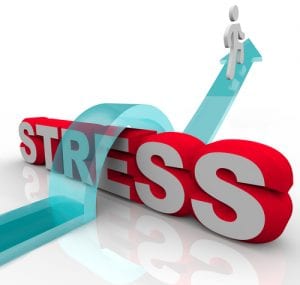
The GREAT thing is that both the conscious and sub-conscious can affect each other back and forth, so conscious stress-reduction strategies + adjustments/movement will build upon each other for an even better result!
Topic 4: The Effects of Stress Physiology Hormones
The two primary stress hormones – a class of hormones called ‘catecholamines’ (adrenaline) and a class of hormones called ‘glucocorticoids’ (cortisol) are primarily released from the Adrenal Glands…
CATECHOLAMINES - The major one being ADRENALINE
The following is a list of all of the physiological effects of releasing catecholamines into the body as part of the ‘Fear & Protection’ reaction:

This occurs through epigenetic down-regulation – the cells literally remove these receptors from their membranes to ‘deafen’ themselves from the excessive quantities of Insulin in the blood.
This occurs in almost all body cells, particularly the liver. Muscle cells are a rare exception.
[Cortisol (next topic) also adds to this effect]
- THIS LEADS TO INSULIN RESISTANCE
Adrenaline increases both heart-rate (beats per minute) and stroke volume (quantity per beat)
Combined with another effect, the increase of blood vessel constriction on the ‘orders’ of the sympathetic nervous system –
- THIS INCREASES BLOOD PRESSURE
** The ‘intelligent’ reason for this, is that it enables rapid delivery of stress hormones and energy substrates
Some areas of the body respond to Adrenaline by constricting (reducing flow of blood to these ares), others by dilation (allowing more blood to these areas)
This also contributes to –
- INCREASED BLOOD PRESSURE
- POSSIBLE INCREASE IN BLOOD VESSEL INFLAMMATION (more plaque formation), and
- EFFECTIVE ‘SHUTTING DOWN’ OF LESS VITAL BODY FUNCTIONS while under stress
This makes the blood more “sticky”, it –
- THICKENS THE BLOOD
Thicker blood can cause clots which can reduce or block blood flow
** The ‘intelligent’ reason for this, is that it prepares the body for wound-repair – in case a trauma is sustained.
Fat is released from selected fat stores around the body (while being stored at the same time around tummy, hips and thighs)
- THIS INCREASES FAT CONTENT OF THE BLOOD – total triglycerides and altered fractions/types of cholesterol carrier-molecules.
** The ‘intelligent’ reason for this, is so that it can be used for gluconeogenesis (to make glucose for energy)
This causes chronic changes to cognition, literally – your ability to THINK.
- INHIBITS FACTUAL LEARNING,
- INHIBITS WORKING MEMORY, and
- INHIBITS THE ABILITY TO FOCUS ATTENTION UNDER CHRONIC STRESS
** These pathways also become sensitized with chronic stress
“Cells in hippocampus actually shrink, and can die”
Stimulation from appropriate levels of movement (including the improved movement resulting from chiropractic adjustments) can theoretically increase both the size and number of hippocampus cells – directly increasing and/or helping restorea:
- Your ability to LEARN
- Your ability to REMEMBER
This could theoretically significantly decrease (up to 70%) incidence of Parkinson’s /Dementia
The amygdala is the stress/anxiety centre of brain.
The amygdala being stimulated leads to:
- PUTTING YOU INTO A STATE OF ALARM TO MAXIMISE YOUR CHANCE OF SURVIVAL
- EMOTIONAL / ANXIOUS MEMORIES DOMINATE – “remember next time to LOOK for the tiger”
** These pathways also become sensitized with chronic stress
Releases corticotrophin releasing hormone (CRH), in turn activating Locus Ceruleus area of the brain:
The release of noradrenalin had wide impacts on brain function:
- ACTS ON THE EMOTIONAL/LEARNING CENTRES OF THE BRAIN
- DECREASES LOGICAL BEHAVIOUR
- DECREASES SHORT-TERM MEMORY
- DECREASES CONCENTRATION
** you are more easily distracted / you cannot focus your attention very well
- INCREASES EMOTIONAL LEARNING
- INCREASES INSTINCTUAL BEHAVIOURS
INCREASES SENSITIVITY (SENSITIZATION) OF SENSORY NERVE SYSTEMS
** increases your sensitivity or perception of pain
“This sharpens the signal detection mechanism at expense of concentration = you become ‘twitchy but forgetful'”
- YOU BECOME BOTH TWITCHY AND IRRITABLE
“Your brain is searching for an escape route instead of for answers”
** These pathways also become sensitized with chronic stress
- MAINTAIN THE STRESS REACTION / ADRENAL REACTION
Under NORMAL circumstances the hypothalamus is INHIBITED by the brain’s ‘feel good’ chemical: SEROTONIN – this is used by the brain to ‘get us back in balance’ after we’ve fired off the stress pathways.
** These pathways also become sensitized with chronic stress
Under Chronic Stress, serotonin production cannot keep up, which leads to:
Any serotonin that is made, is being used for anti-anxiety functions and none is left for the NORMAL job of seratonin: ‘feeling good’
- THIS LEADS TO DEPRESSION
In combination with the effects of increased noradrenaline being released from the Locus Ceruleus (described above), decreased serotonin contributes to the following effects:
- DEPRESSION
- IRRITABILITY
- FATIGUE
- LISTLESSNESS
- SLEEP PROBLEMS
- TENSION HEADACHE
- DECREASED SEX DRIVE
- DECREASED GROWTH HORMONE – more rapid ageing
- CHANGES IN APPETITE – craving sugar and fat^
- WEIGHT-GAIN
^Fat and sugar are the main components of (building blocks needed to produce) stress hormones.

GLUCOCORTICOIDS - The major one being CORTISOL
The following is a list of the MAJOR physiological effects of releasing catecholamines into the body as part of the ‘Fear & Protection’ reaction:
Cortisol is particularly involved with reduction of (cell-mediated) immune function
**The intelligent reason for this is that such function is “metabolically expensive” meaning it takes TOO much energy. These functions are turned off “while you’re running from the tiger” – it is only when you survive the tiger that the body then prioritises ‘healing’ functions in the event you managed to get ‘bitten’
As mentioned in the previous section, in conjunction with catecholamines, cortisol reduces insulin receptors on cell membranes (excluding skeletal muscle).
Acts on the liver, causing breakdown (CATABOLISM) of sugar-stores (glycogen).
** This is made worse because the liver quickly becomes insulin-resistant
- INCREASES BLOOD SUGAR LEVELS
Acts on liver, causing breakdown (CATABOLISM) of protein stores for gluconeogenesis (turning protein into sugar for immediate energy needs)
- STRUCTURAL PROTEIN DEGRADATION – breakdown of muscle, tendons, ligaments etc.
Acts on the liver to release fat stores and also changes the ratios of LDL vs HDL being produced.
- THIS INCREASES FAT CONTENT OF THE BLOOD – total triglycerides and altered fractions/types of cholesterol carrier-molecules.
** The ‘intelligent’ reason for this, is so that it can be used for gluconeogenesis (to make glucose for energy). LDL, the so-called ‘bad’ cholesterol is released because it is kind of like a ‘band-aid’ plug to protect from the effects of increased blood pressure.
The NET effects of these two changes is
- DECREASED HDL production, and
- DECREASED LDL absorption/uptake by the liver
** More LDL provides more building blocks (easily accessible, less ‘densely packed’ cholesterol) for continued steroid-based hormone production;
** More LDL serves a function in wound-healing (clotting and repair) so more LDL prepares for this potential need
** More LDL is necessary for mood regulation after the thread has ceased – it is used to REVERSE/COUNTERACT the blood sugar low after insulin does ‘overkill’
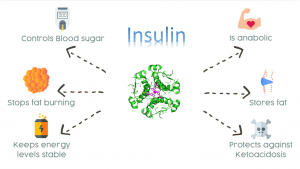
Insulin Resistance – a Huge Problem!
Insulin resistance is a major ‘pillar’ of chronic ill-health. Read more about these ‘pillars’ here – it’s truly important information to understand. Body resistance to insulin comes about because of sustained high blood sugar levels/load that cause the pancreas to secrete large quantities of insulin. Normally one of the major effects of Insulin is lowering
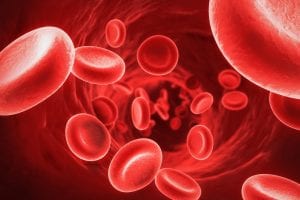
Effects of Long-term High Blood Sugar Levels
High blood sugar levels are a consistent health-risk for many of us – whether or not we are ‘officially’ diagnosed with diabetes or pre-diabetes. This comes about primarily as a result of the foods a lot of us in industrialised society choose to eat. These foods are mostly highly refined, non-fibre ‘foods’ containing refined sugars/corn
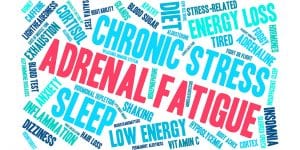
Negative Health Effects of Chronically High Stress Hormones
In another article here, we describe the release of stress hormones as part of the body’s ‘fear & protection’ reaction. The question is, “what does that mean for how our bodies work?” The negative health effects of increased stress hormones being released on an ongoing basis are stark and far-reaching. Almost every current ‘disease of


